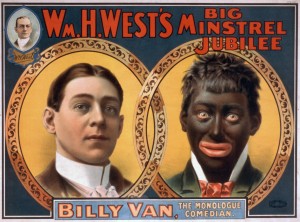A Quick Overview of the Race Films Movement:
This particular movement occurred between 1912-1940s. As time progressed, the 1950s found all-black casts, moving towards making it much easier for African-American actors, directors, producers, and others to find work in Hollywood by the 1970s (1).
Some of the significant styles of this movement included topics that adhered to African Americans. Some films depicted Caucasians exhibiting acts of violence against minorities. Simultaneously portrayed Blacks in a complimentary light, a stark contrast to the other types of films being made during this time where they were set as servants and lesser characters often played by White actors in Blackface and served as the butt of the jokes (1).

Oscar Micheaux:
most famous producer/director
of race films

- (1) Duke University. “From Blackface to Blaxploitation: Representations of African Americans in Film.” Duke University Libraries. Web. 24 Sept. 2013.
Prior to the Race Films Movement, the public opinion of typical black characters were formed through a popular form of live entertainment known as “blackface,” which began in the early 1800’s. During this performances, white actors would paint their faces black and dress in worn out farming clothes or cheap suits meant to resemble those stereotypically worn by slaves and free blacks. These characters lacked depth and thus propagated (while being based on) extreme racial stereotypes. Among these were the “Zip-Coon” and “Mammy” characters. They would speak in particular vernacular and authors would be sure to write their character’s dialogue phonetically to match.
Here is a link to a common blackface performance known as “zip coon”
Due to the “commonplace” of these characters, they were thought to be the only characters that a white public would accept in the early years of film. However, black filmmakers did not have the need to satisfy the white public and could focus on being among the first true independent movements of film focusing on an entirely black audience. Ultimately, the movement was a great success and larger studios began to spring up. Eventually, the larger studios would begin investing in these studios to cash in on the black audience, this later became known as “blax/blacksploitation.”
For a slightly more in-depth look at the beginning of race films, Click Here

